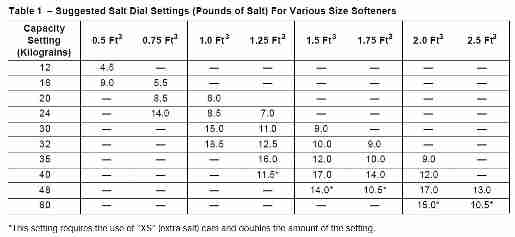The Autotrol "suggested salt settings" table shows that 9 lbs. salt in a 1.5 cu. ft. softener = 30K grains capacity.
9 lbs. salt in a 2.0 cu. ft. softener yields 35K grains capacity.
1.) If you are using the same 9 lbs. of salt, why the capacity difference? What am I missing here (go ahead, make me feel stupid ). It seems that a given amount of salt should displace the same amount of ions regardless of the resin bed size.
). It seems that a given amount of salt should displace the same amount of ions regardless of the resin bed size.

2.) Please explain the pros/cons and preferred recommendation to have the brine tank fill pre regeneration or post regeneration. My unit will probably have a time over ride of 7 days.
3.) The Clack valve on my new softener is model WS1 CH. What does the CH designate?
Thank you.
9 lbs. salt in a 2.0 cu. ft. softener yields 35K grains capacity.
1.) If you are using the same 9 lbs. of salt, why the capacity difference? What am I missing here (go ahead, make me feel stupid

2.) Please explain the pros/cons and preferred recommendation to have the brine tank fill pre regeneration or post regeneration. My unit will probably have a time over ride of 7 days.
3.) The Clack valve on my new softener is model WS1 CH. What does the CH designate?
Thank you.

